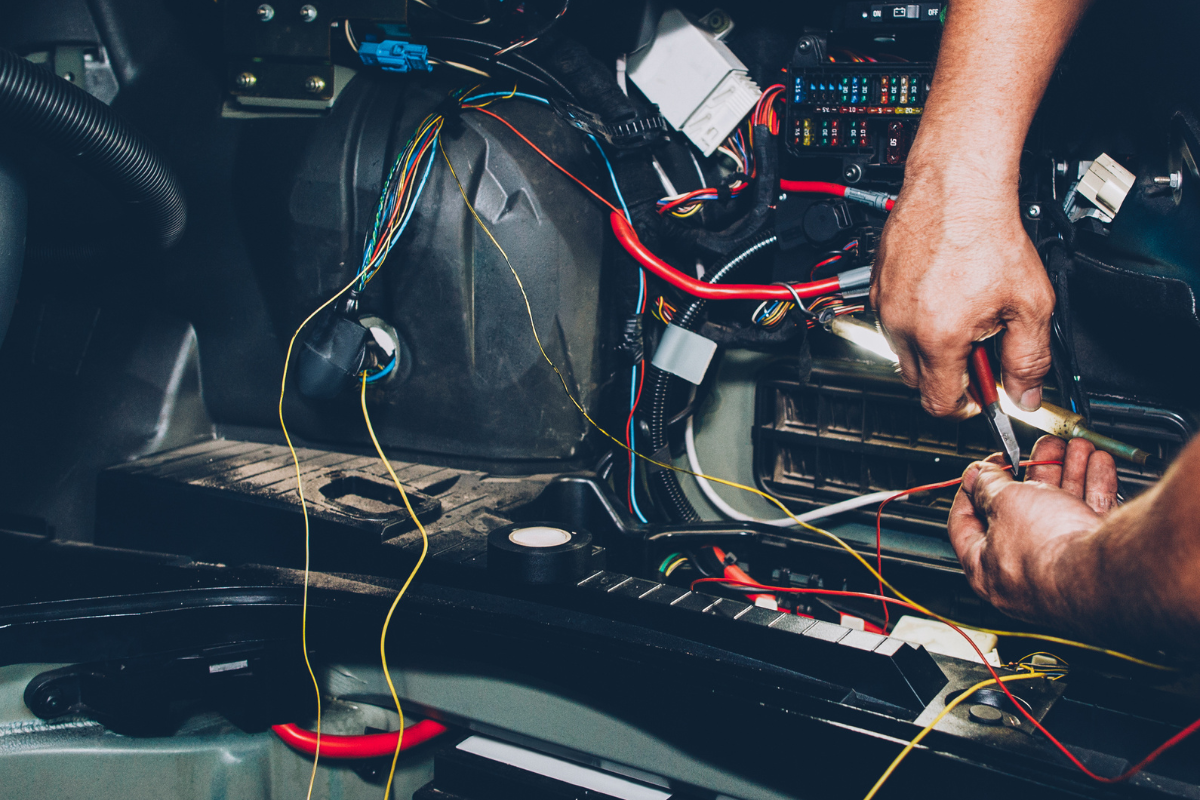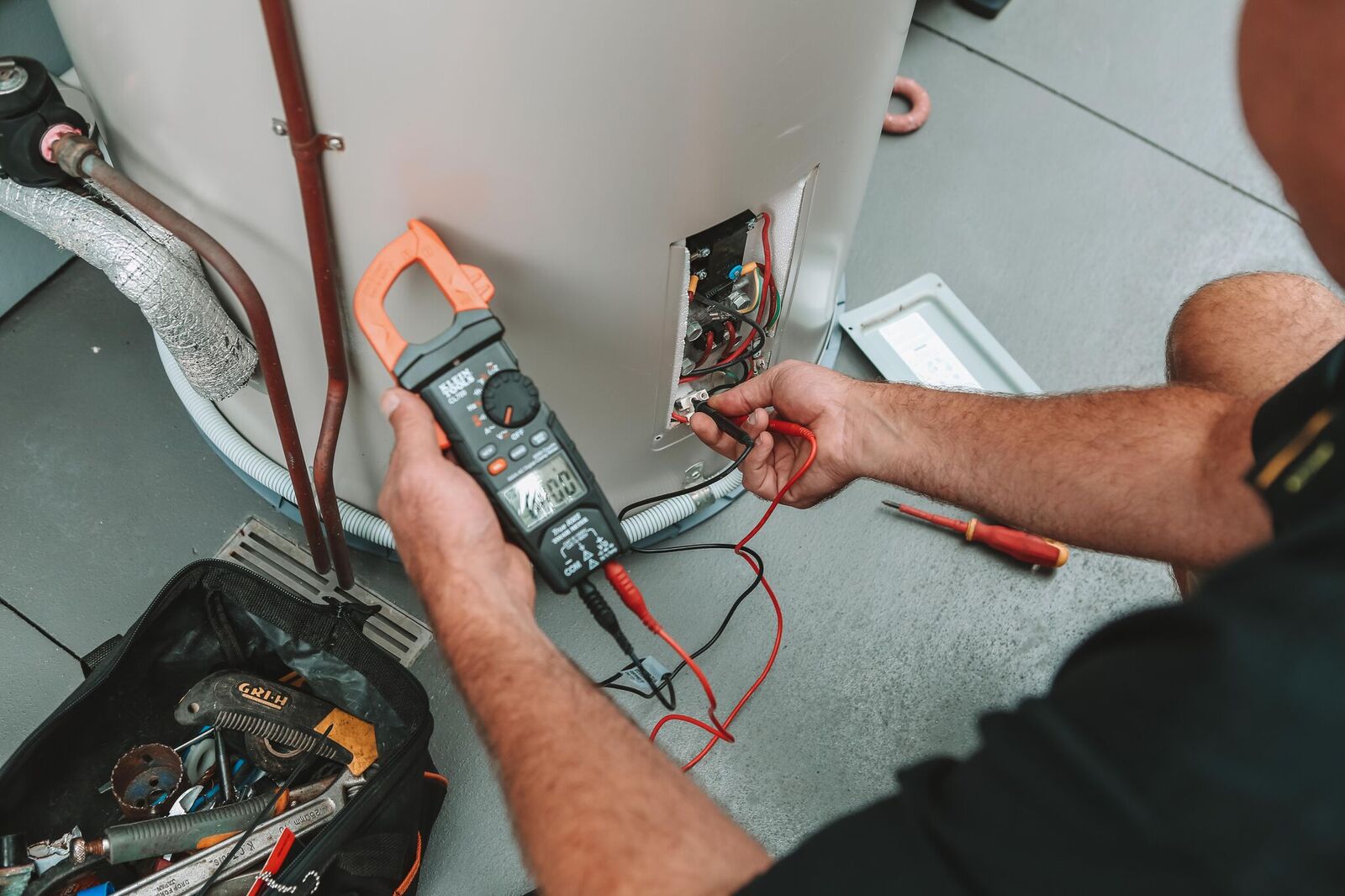When to hire a Sydney Level 2 Electrician for frequent blackouts
Wiki Article
Typical Electric Troubles Every Homeowner Must Know Concerning
Homeowners commonly come across different electrical troubles that can influence safety and security and functionality. Concerns like flickering lights and tripped circuit breakers are more usual than several realize. These situations can show deeper electric worries that warrant attention. Recognizing the risks and indications related to outdated circuitry and dead electrical outlets is essential. What measures can be required to stop these troubles? Discovering these usual electrical concerns could disclose essential understandings for preserving a secure home environment.
Flickering Lights: Causes and Solutions
Why do some homeowners experience flickering lights? Flickering lights can be a typical annoyance, typically suggesting underlying electrical concerns. One main cause is loose or malfunctioning links within lighting fixtures or circuitry, which can lead to intermittent power supply. In addition, utilizing high-wattage devices on the same circuit may trigger voltage changes, resulting in lowering or flickering. Another potential problem is an overloaded circuit, where also many tools draw power simultaneously, straining the electrical system. Out-of-date or abject circuitry can contribute to inconsistent electrical circulation. Sometimes, flickering lights may signify a problem with the home's electrical panel or service line. Homeowners ought to address flickering lights without delay to stay clear of possible hazards. Solutions may consist of tightening up connections, rearranging home appliance tons, or getting in touch with an accredited electrician for a detailed assessment. Recognizing the origin can assist assure a secure and safe electric system in the home.
Tripped Circuit Breakers: What You Required to Know
Have house owners ever before wondered what causes their circuit breakers to trip suddenly? This usual problem commonly emerges from an overload of electrical circuits, where as well several devices draw power concurrently. In such situations, the circuit breaker acts as a security mechanism, disrupting the flow of electrical energy to stop overheating and possible threats. One more frequent reason is a short circuit, which takes place when a real-time cord contacts a neutral cord, creating a surge of electricity that trips the breaker. Ground faults can additionally bring about tripped breakers; these happen when a real-time cable touches the ground or a based surface area, posturing major safety and security risks. House owners should routinely assess their usage of high-wattage home appliances to prevent overloading circuits. Furthermore, recognizing the function of circuit breakers can aid them respond properly during a trip, guaranteeing their home remains well-kept and secure.Obsolete Wiring: Signs and Risks
Outdated circuitry can pose significant risks to property owners, frequently going unnoticed up until troubles develop. Houses developed prior to the 1980s may still have aluminum wiring or knob-and-tube systems, which are no longer thought about risk-free. Indicators of out-of-date circuitry include flickering lights, often stumbled circuit breakers, or shedding smells near outlets. These indications may suggest that the electric system is loaded down or deteriorating.Additionally, homeowners may notice burn marks around electrical outlets or buttons, which can indicate getting too hot. The risk of electric fires considerably increases with outdated electrical wiring, as these systems were not created to manage contemporary electrical tons. Property owners are motivated to have their wiring examined on a regular basis, particularly when restoring or including brand-new home appliances. By identifying these indicators early, they can prevent harmful situations and preserve a more secure living atmosphere. Updating to existing electric standards is a positive step in keeping home safety and security and performance.Frequently Blown Fuses: Fixing Tips
Regular blown integrates can suggest underlying electrical concerns that may come from obsolete electrical wiring or overloaded circuits. Property owners experiencing this problem should first recognize the appliances attached to the impacted circuit. It is recommended to prevent making use of multiple high-wattage gadgets simultaneously, as this can bring about circuit overload. If the trouble persists, evaluating the fuse box for indications of wear or damage is critical; a damaged circuit box might need replacement.Additionally, checking for loosened connections within the circuit can help avoid future events. Property owners need to also validate that the merges being utilized are of the right amperage, as making use of an incorrect fuse can intensify the issue. If these fixing ideas do not fix the problem, getting in touch with a licensed electrician is recommended to review the electric system additionally. Addressing these worries quickly can help reduce risks and guarantee the security of the home's electrical infrastructure.Dead Electrical Outlets: Common Causes and Repairs
When a homeowner comes across a dead electrical outlet, it can typically be a source of stress and complication. Several usual reasons might result in this concern. One frequent wrongdoer is a tripped breaker, which can be conveniently reset. If any breakers are in the off setting, homeowners must check their electric panel to inspect. An additional possibility is a defective electrical outlet itself, which may require substitute. Furthermore, loose electrical wiring links within the outlet can interfere with power circulation, making examination essential.Sometimes, the trouble may stem from an overloaded circuit, especially when several devices are connected. In such situations, rearranging the electrical tons can settle the issue. Homeowners must additionally think about the age of their electrical wiring; older systems might require updates to satisfy modern-day electric needs. If these actions do not correct the scenario, speaking with an accredited electrician is a good idea to ensure safety and security and appropriate diagnosis.Electric Shocks: When to Be Worried
How can homeowners figure out whether an electric shock warrants issue? Home owners must first assess the extent and context of the shock. A mild fixed shock, typically felt when touching metal objects, is usual and typically harmless. Nevertheless, if the shock happens while engaging with a plugged-in home appliance or electrical outlet, it might show an extra severe issue.The place and frequency of the shocks are necessary. Repeated shocks from the exact same resource, especially in wet locations like kitchen areas or restrooms, can indicate defective circuitry or inadequate grounding. Home owners ought to likewise take into consideration the experience of the shock; a jolt that creates discomfort or contraction is a lot more worrying than a simple tingle.If there's any unpredictability, it is recommended to click here now speak with a qualified electrical contractor. Ignoring possible electrical threats can bring about serious safety and security risks, including fire or extreme injury.Overloaded Circuits: Avoidance and Safety And Security Procedures
Overloaded circuits position substantial risks in household settings, commonly resulting in electric fires or devices damages (Level 2 Electrician). Home owners must identify the signs of an overloaded circuit, such as regularly stumbled breakers or lowering lights. Implementing precautionary security techniques can aid reduce these hazards and assure a much safer living settingIdentifying Overloaded Circuits
What signs indicate that a circuit may be overwhelmed? Homeowners must be watchful for a number of crucial indications. Often tripped circuit breakers or blown merges suggest extreme load on the circuit. Lowering or flickering lights, especially when various other devices remain in usage, can symbolize an insufficient power supply. In addition, electrical outlets or buttons that feel cozy to the touch might suggest overheating, a prospective fire threat. Unusual humming audios from outlets additionally warrant attention, as they can represent electric issues. If home appliances operate inefficiently or fall short to start, it might be an indication of an overloaded circuit. Recognizing these indicators early can assist prevent severe electric troubles and advertise a safer home setting.
Preventive Safety Practices
To preserve a secure and effective electrical system, homeowners should carry out preventative security practices that resolve possible circuit overloads. One efficient action is to stay clear of attaching way too many tools to a single electrical outlet, as this can go beyond the circuit's ability. Using power strips with integrated breaker can assist disperse power safely. House owners should likewise frequently inspect cords and devices for damages and change any malfunctioning tools without delay. It is crucial to ensure that circuit breakers are working appropriately and to be familiar with the overall power level being used in each circuit. Additionally, seeking advice from a qualified electrical contractor for regular examinations can determine prospective problems before they intensify, assuring a much safer living environment and extending the lifespan of electrical systems.Frequently Asked Inquiries
Just how Frequently Should I Have My Electric System Inspected?
Routine assessments of electrical systems are recommended every three to 5 years. House owners ought to think about more frequent checks if they experience concerns, carry out restorations, or reside in older residential or commercial properties to ensure security and conformity.Can I Take Care Of Electrical Problems Myself or Employ a Professional?

What Are the Signs of an Electric Fire Risk?
Indications of an electrical fire danger include frequently tripped breaker, flickering lights, shedding odors, stained electrical outlets, or cozy, humming wires. Homeowners must stay cautious and look for professional assistance if any one of these signs exist.Exactly how Do I Know if My Home Requirements an Electric Upgrade?
To identify if a home requires an electric upgrade, signs consist of constant breaker trips, outdated wiring, inadequate outlets, flickering lights, and the existence of older electric panels, showing possible safety hazards and inefficiency.Are There Specific Security Tips for Do It Yourself Electrical Work?
When thinking about do it yourself electric work, one need to always turn off power, make use of protected devices, verify circuit performance, adhere to local codes, and get in touch with specialists for complicated tasks to ensure safety and stop crashes. Another possible concern is an overloaded circuit, where as well lots of devices draw power at the same time, straining the electric system. The risk of electrical fires noticeably raises with out-of-date wiring, as these systems were not developed to deal with modern-day electrical loads. Constant blown fuses can indicate underlying electric problems that might stem from out-of-date wiring or overloaded circuits. To keep a effective and secure electric system, property owners should look at this website apply precautionary security methods click that address possible circuit overloads. ASP Level 2 Electrician. Indications of an electrical fire threat include regularly tripped circuit breakers, flickering lights, burning odors, discolored electrical outlets, or warm, buzzing cordsReport this wiki page